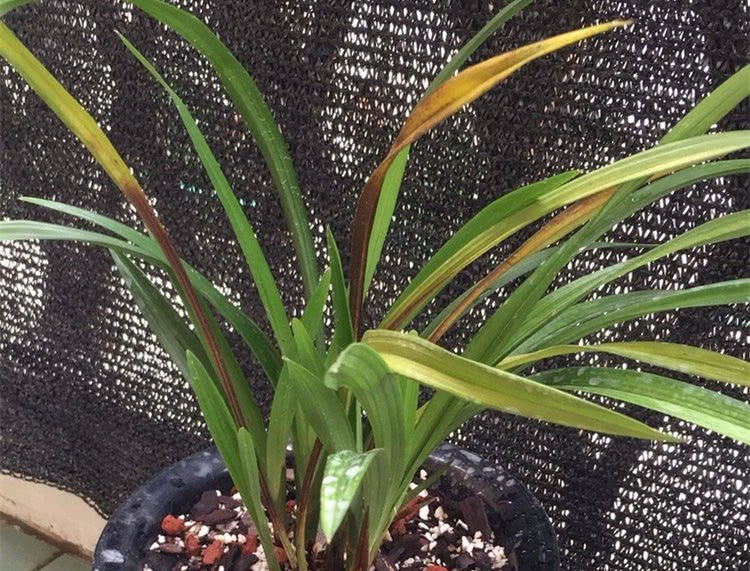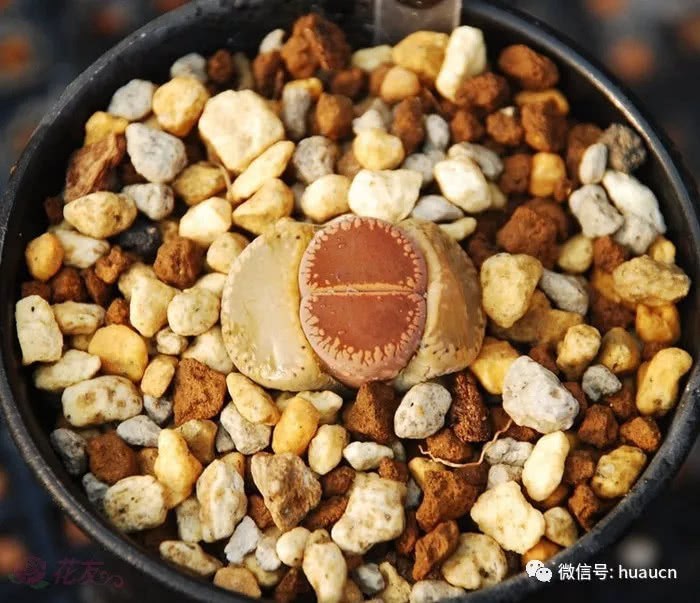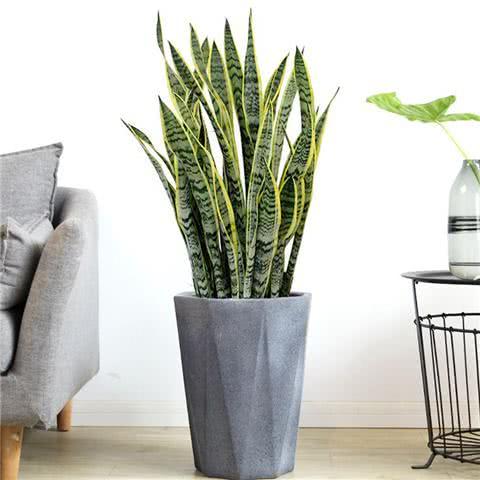How many reasons do you know about the yellow leaves of potted orchids?

Orchid yellow leaves, there are many reasons, many people think that it is very simple, in fact, it is quite complex, let's take a look at it! A few days ago, the flower friend said that the orchid he had raised for several years had yellow leaves, which was very anxious. Tried a lot of ways, but there is still no "meaning" to stop. I asked her, do you know why? She didn't understand. She heard all about it.
It is futile to prescribe drugs and plans without knowing the yellow leaves of orchids. So today, let's take a look at the top 10 reasons for the yellow leaves of orchids, and after we know it, we will give you a better solution, so that orchids can be raised well.
1. The leaves are yellowing, but growing normally.
In fact, it can not be said to be yellow, but it is not green enough, showing the feeling of losing green. If there is nothing wrong with the plant, it still grows normally. Then your orchid may be due to lack of sunlight or too strong light. At this time, you should give the orchid proper sunshine, it will turn green slowly.
2. The leaves turn yellow and the buds are relatively small.
This may be a sign of lack of fertilizer in orchids, or it may be due to root problems. At this time, you can add a small amount of nitrogen fertilizer to the orchid, or supplement some special orchid nutrient solution to promote root conditioning and supplement nutrients, the yellow leaves will turn green slowly, and the buds will slowly become bigger.
Secondly, it may be caused by low humidity. At this time, we should water orchids or spray foliage, directly watering orchids or choosing soaking pot method. After watering and fertilizing, this situation will not happen again.
3. The old leaves are yellow and fall off.
This problem of orchids is caused by overwatering, and it may also be caused by poor operation when potting. At this time, we have to control watering, into the autumn can be considered to change the soil, for orchids to use professional soil, more conducive to growth.
4. The ends of the new leaves are scorched. What's the problem?
If the new leaves appear yellow leaves, it may be because the concentration of fertilizer used is too high, resulting in burning leaves. Or the choice of plant material is relatively poor, less nutrient absorption.
5. What is the problem with the black spots that appear in both new and old leaves?
The occurrence of such a phenomenon may be due to the muggy heat in the basin, resulting in rotting roots. We can increase the air permeability of the basin soil, and secondly, we can disinfect the roots with carbendazim solution. Secondly, the leaves should also be sprayed, just in case.
6. Why stop growing when sprouting and breaking the soil?
There are rotten roots or unclean things next to the new bud, open the breeding wood around the new bud, remove the unclean matter and resume growth. Or wipe the leaves with diluted beer to increase the photosynthesis of the leaves, so that growth can be restored.
7. The leaves appear purple and the back of the leaves is normal
This is the lack of phosphate fertilizer, which is usually the case with phosphorus deficiency. We can supplement some potassium dihydrogen phosphate, spray foliar dilution 1000 times, once every 7 days.
8. There are spots and water-immersed edges on the leaves.
Excessive humidity, basin humidity and air humidity produce asphyxiation, accompanied by leaf rot bacteria. Poor ventilation and ventilation. Carbendazim, copper and azoxystrobin were used.
9. The scalding and shrinking head appears at the end of the leaf
The water temperature of watering is too high; the temperature is too high when watering; showers are caught in high temperatures in summer, etc. Pay attention to control the watering time, do not let the potted plants in the rain, dry quickly after the rain.
10. There is chloasma on the leaves
When the root is heated, it is necessary to put a brick at the bottom of the balcony or move it indoors. Or increase the watering, or change the planting material. It's all preventable.
All right, a little knowledge about the yellow leaves of orchids. Let's start at 10:00. Let's see what time you know.
- Prev

Soil for cultivation and culture of stone flower
I believe that many big gods of raw stone flower culture are basically "random" with soil, and the "random" here is not very random, but there is a wealth of maintenance experience in it. The soil of these people is permeated with the words "basic, almost".
- Next

In autumn, add some to the tiger peelan pot. The explosion pot keeps growing.
Tiger Pilan has strong adaptability and lax requirements for the living environment, so it is very suitable for home decoration. Then how to make Tiger Pilan explode in autumn? here are some ways to introduce you! Pine needles in autumn, pine needles that fall naturally can be found in the wild, which can be collected.
Related
- Wuhan Hospital Iron Tree Blooming Result Was Instantly Frightened by the Gardener Master
- Which variety of camellia is the most fragrant and best? Which one do you like best?
- What is the small blue coat, the breeding methods and matters needing attention of the succulent plant
- Dormancy time and maintenance management of succulent plants during dormancy
- Minas succulent how to raise, Minas succulent plant pictures
- What are the varieties of winter succulent plants
- How to raise succulent plants in twelve rolls? let's take a look at some experience of breeding twelve rolls.
- Attention should be paid to water control for succulent plants during dormant period (winter and summer)
- Watering experience of twelve rolls of succulent plants
- Techniques for fertilizing succulent plants. An article will let you know how to fertilize succulent plants.

